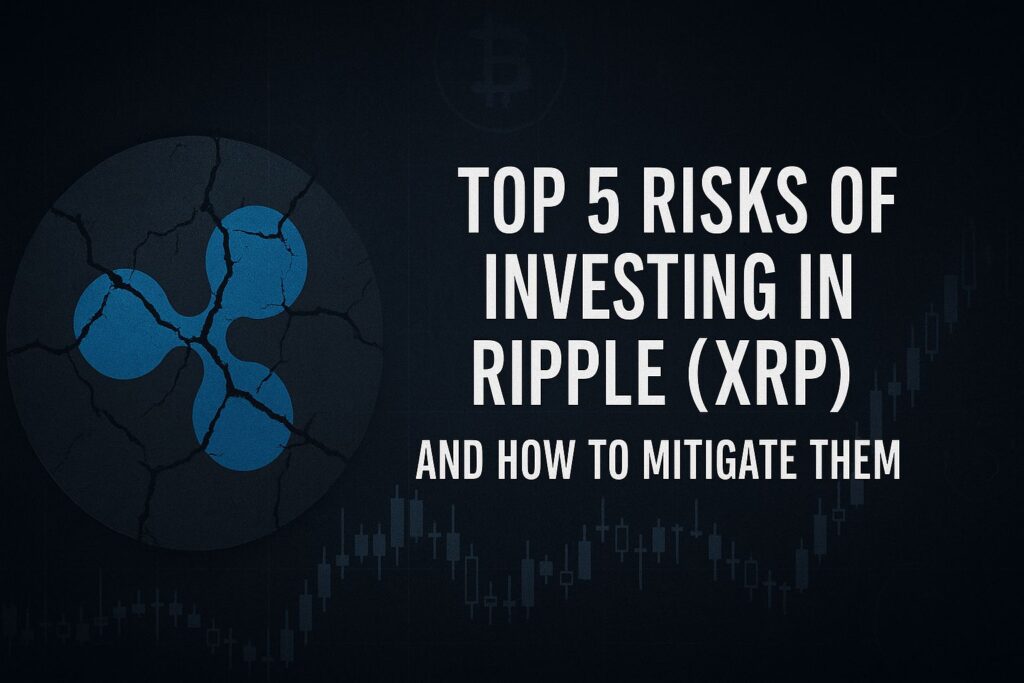XRP is a popular cryptocurrency known for its fast transactions and low fees. Many investors see potential in its use for cross-border payments. However, like any investment, XRP comes with risks. Understanding these risks helps you make smarter decisions.
Here are the five biggest risks of investing in XRP and practical ways to reduce them.
1. Regulatory Uncertainty
The Risk:
XRP has faced legal challenges, including the SEC lawsuit that claimed it was an unregistered security. While Ripple won part of the case in 2023, future regulations could still impact XRP’s value.
How to Mitigate It:
- Stay updated on regulations – Follow trusted crypto news sources like CoinDesk or The Block.
- Diversify your investments – Don’t put all your money into XRP. Spread it across different assets.
- Watch for exchange listings – Some platforms may delist XRP if regulations change.
2. Price Volatility
The Risk:
XRP’s price can swing dramatically. In 2017, it jumped from 0.006 to 4 then crashed In 2023, it surged 70% after Ripple’s court win but later dropped.
How to Mitigate It:
- Use dollar-cost averaging (DCA) – Invest small amounts regularly instead of all at once.
- Set stop-loss orders – Automatically sell if the price drops below a certain point.
- Avoid panic selling – Volatility works both ways; prices often recover.
3. Centralization Concerns
The Risk:
Ripple Labs controls a large portion of XRP (about 50 billion coins). They release 1 billion XRP monthly, which can flood the market and lower prices.
How to Mitigate It:
- Track Ripple’s escrow releases – Large sales can affect prices.
- Look for decentralization efforts – More independent uses of XRP reduce Ripple’s influence.
- Monitor Ripple’s partnerships – More adoption by banks is a positive sign.
4. Competition from Stablecoins and CBDCs
The Risk:
Stablecoins (like USDC) and central bank digital currencies (CBDCs) compete with XRP for cross-border payments. If banks prefer these alternatives, demand
for XRP could fall.
How to Mitigate It:
- Compare transaction speeds and costs – XRP must stay faster and cheaper than competitors.
- Watch adoption trends – More financial institutions using XRP is a good sign.
- Check trading volume – Low volume may indicate declining interest.
5. Liquidity Risks
The Risk:
XRP isn’t as liquid as Bitcoin or Ethereum. In a market crash, selling large amounts quickly could lead to significant losses.
How to Mitigate It:
- Use major exchanges – Binance, Kraken, and Coinbase offer better liquidity.
- Avoid panic selling – Illiquid markets punish rushed sales.
- Check order book depth – More buyers and sellers mean smoother trades.
Smart Investing Tips for XRP Holders
- Secure your XRP – Use hardware wallets like Ledger or Trezor to protect your coins.
- Set clear goals – Decide if you’re holding long-term or trading short-term.
- Ignore hype – Social media pumps often lead to losses. Stick to facts.
The Bottom Line
XRP has potential but isn’t risk-free. By understanding these risks, you can invest more wisely. Stay informed about regulations, market trends, and Ripple’s developments.
For the latest updates, follow Ripple’s official blog



